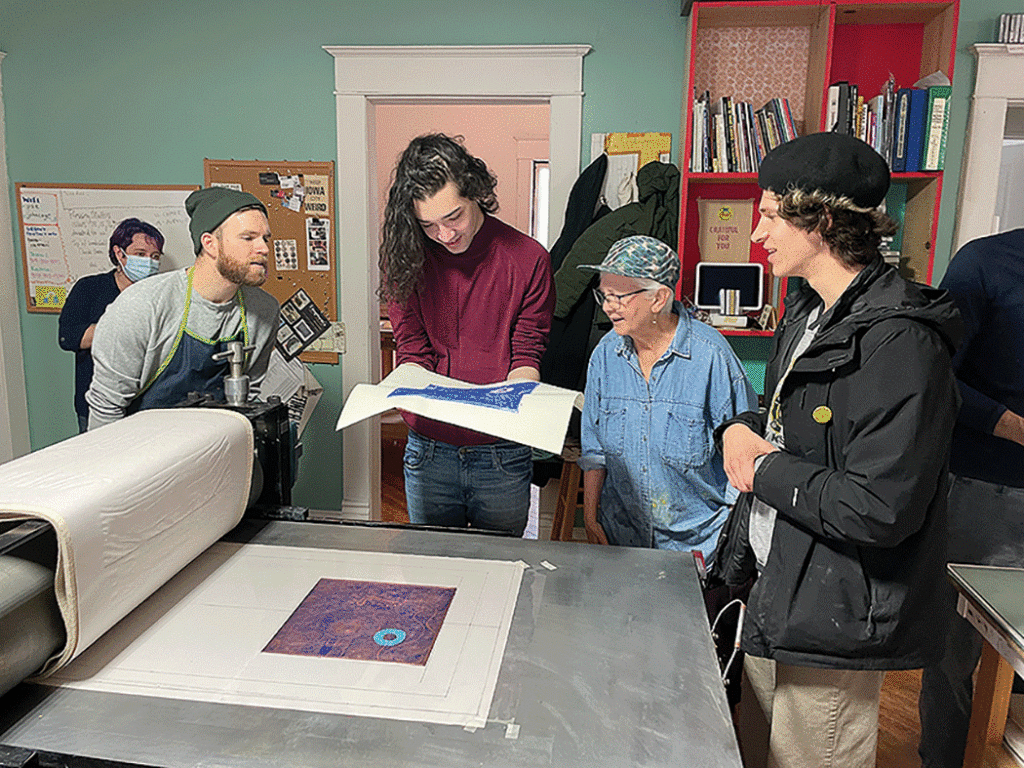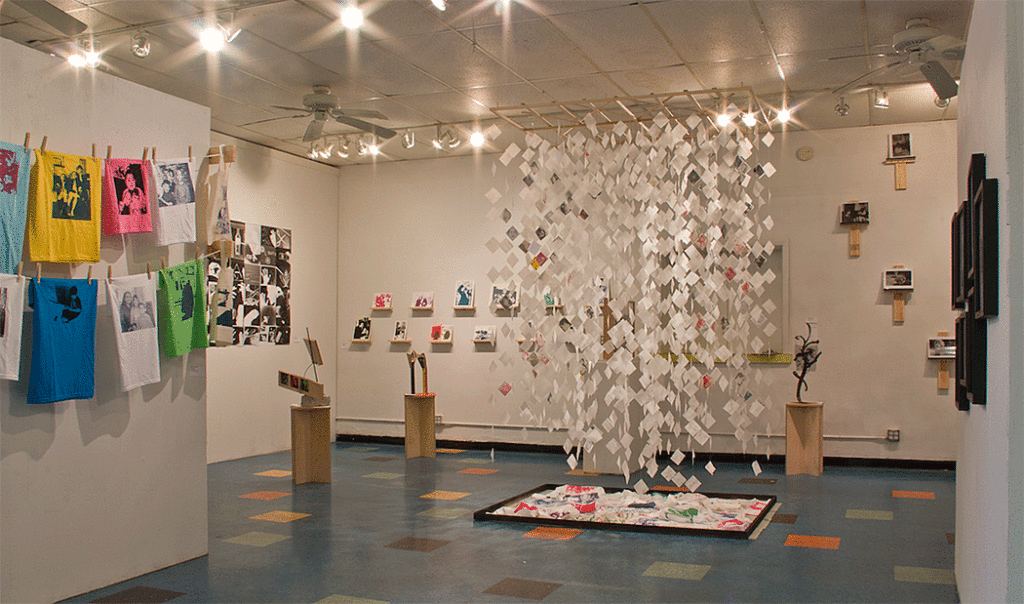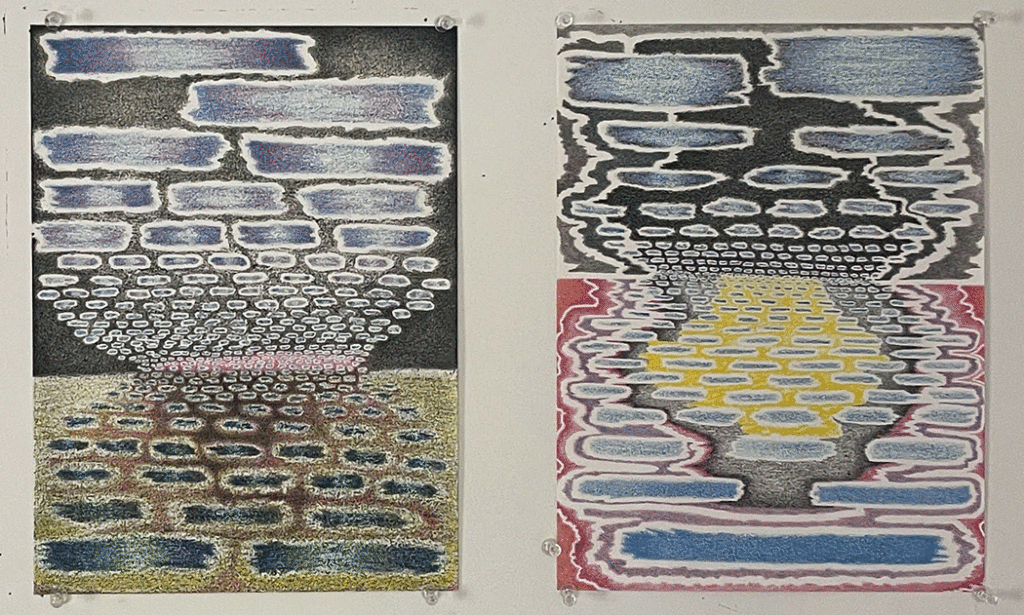
Founded in 2002, Iowa City’s Public Space One (PS1) has become a thriving, artist-led, community-oriented art center, maintaining multidisciplinary, experimental spaces for Iowa City and Southeast Iowa. Not only does PS1 advocate for art in everyday life, it also supports artists with welcoming spaces for making art, innovative programs that stretch boundaries, and cultural resources for learning.
“We started as a completely DIY space,” says PS1 Program Director Kalmia Strong. “That’s really at the heart of what we do—having a low-barrier entry point to folks being involved in the arts, whether that is attending an arts event, learning how to do something creative, presenting your own creative work, or collaborating with other creative folks. Over the years, that has manifested into a lot of different programs and resources for artists and anyone who wants to be creative or engage with the arts.”
PS1 hosts exhibitions from local and national artists year round, and they also provide a multitude of community platforms, including space for performances, studios, and workshops. PS1 produces two annual festivals each year—one for zines and one for video and media work.
In 2012, PS1 established Iowa’s only community-access printmaking studio–then Zenzic Press, now the Iowa City Press Co-op (ICPC). In 2016, they founded the Center for Afrofuturist Studies (the CAS), a residency and visiting artist program for artists of color. And in 2019, PS1 merged with Iowa City’s public access station (PATV)—now the Media Arts Co-op (MAC). PS1 currently occupies two historic neighborhood houses and in 2021 bought the historic Close Mansion, which houses exhibitions, residencies, and community artists and organizations.

Strong explains that their core strategy of inviting and relying on community members for all aspects of PS1 has been remarkably successful. “Our exhibition program, for example, is curated by a volunteer community gallery team,” she says, adding that all PS1 programs have evolved in response to “folks showing up, participating, and having awesome ideas.” PS1 then provides the structure to support these projects.

In 2024, PS1 became the only Iowa organization to administer funds through the newly created Big Field Fund from the Andy Warhol Foundation for the Visual Arts. The Big Field Fund partners with local arts organizations to provide grants to artists and collectives for projects that chart new creative territory in their communities. “They provide the funding and some guidelines,” says Strong. “The organization itself creates the grant and designs it to be responsive to the local community, and then administers the grant on a yearly basis. We’re the 36th regional re-granting program, the first one in Iowa.”
This is particularly significant because participation is by invitation only. “When we were invited to do this, I was astounded,” says Strong. “I was so excited, because it really aligns with what we want to do—support artists who want to try new things, who are at different levels of experience with their artistic practice.”
Strong says they were thrilled by the diversity of the 2024 Big Field Fund applicants, and announced the first round of awardees in December. “We got a good range of folks from Fairfield, Dubuque, Cedar Falls, the Waterloo area, and Cedar Rapids,” she says. “I was really, really happy with the response. We actually got a lot more applications than I anticipated for the first year. There was a great variety of artists of different ages, different approaches, and different esthetics.”
Strong says that the Big Field Fund offers two types of grants. The project grant is for artists who have a clear project in mind, while the research and development grant allows artists to explore ideas, something Strong says is very unusual in the grant world.
Last year, PS1 offered a two-step application process: people submitted a short initial application to make sure they were eligible, and then all eligible artists were invited to submit a more in-depth application. “We didn’t want artists to have to spend a lot of time on an application if their project didn’t really fit within the goals of the grant,” Strong explains. She expects the 2025 process to be handled similarly.
Strong says Big Field Fund grants are “intentionally focused on projects that are new, novel, or inventive and push boundaries in some way.” Furthermore, she explains that they want to “support artists that might not otherwise get funding, or projects that might not otherwise get funding because they may be risky or multidisciplinary or just don’t fit in the standard funding categories.”

PS1 was founded to encourage and support involvement in the arts. “We believe artists are under-recognized as leaders in making the world a better place,” says Strong, “and we want to give artists power, and also empower people who don’t necessarily consider themselves artists to see how important creativity can be in their lives and in the lives of everyone.”
For more information, visit PublicSpaceOne.com. See the full list of Big Field Fund awardees for 2024 at BigFieldFund.org.
